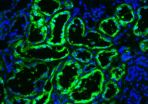(Press-News.org) OTTAWA, July 21, 2014 – A new survey, ordered by the University of Ottawa Heart Institute, shows that a majority of Canadian women lack knowledge of heart disease symptoms and risk factors, and that a significant proportion is even unaware of their own risk status. The findings underscore the opportunity for patient education and intervention regarding risk and prevention of heart disease.
Heart disease is a leading cause of morbidity and mortality in men and women. Our understanding of heart disease stems chiefly from clinical trials on men, but key features of the disease differ in women. Published in the Canadian Journal of Cardiology (CJC), the article shows findings from the first ever Canadian national survey of women that focuses on knowledge, perceptions, and lifestyle related to heart health.
Undertaken in the spring of 2013, the cross-country investigation surveyed 1,654 women aged 25 and over. Results showed that just under half of women were able to name smoking as a risk factor of heart disease, and less than one-quarter named hypertension or high cholesterol. Surprisingly, fewer than half of all women surveyed knew the major symptoms of heart disease.
"Women are under-studied, under-diagnosed, and under-treated because of a lack of public and professional awareness of women's coronary risk," said Lisa McDonnell, lead author and Program Manager for the Canadian Women's Heart Health Centre at the Heart Institute. "The findings show that we absolutely need to increase awareness and knowledge, and to correct misperceptions concerning the incidence, prevalence, and significance of cardiovascular disease (CVD) among women and health care providers."
Furthermore, when it comes to being informed about heart disease, the majority of women mentioned their preference on receiving information from their doctor, but just half reported that their doctor had discussed prevention and lifestyle with them during consultations.
Perception vs Reality
The survey also shows that women who are at the highest risk perceived themselves to be at a much lower risk. In a comparison of actual and perceived heart disease knowledge, 80% of women with a low knowledge score perceived that they were moderately or well informed.
Additionally, 35% of women with CVD viewed their event as only an episode that has now been treated, after which they resumed their pre-diagnosis lifestyle "Out of Sight, Out of Mind" phenomenon.
"As 65% of the women indicated that they had the greatest influence over their family's health, and identified themselves as the "heart keepers" of their families' heart health, ensuring that they have access to the right resources and appropriate treatment would have a positive impact on all Canadian families," concluded Lisa McDonnell.
The University of Ottawa Heart Institute will be launching the first Canadian Women's Heart Health Centre next Fall to address the disparities in diagnosis, treatment and ongoing care for women with heart disease. The Centre will help increase awareness, knowledge and will correct misconceptions. It will support primary care providers with preventive care model and will develop a network of leadership and knowledge-providers
INFORMATION:
Media Contact
Vincent Lamontagne
Senior Manager, Public Affairs
University of Ottawa Heart Institute
613-761-4427
613-899-6760 (cell)
vlamontagne@ottawaheart.ca
Heart disease: First Canadian survey shows women unaware of symptoms and risk factors
2014-07-21
ELSE PRESS RELEASES FROM THIS DATE:
Circumcision does not promote risky behavior by African men
2014-07-21
Men do not engage in riskier behaviors after they are circumcised, according to a study in Kenya by University of Illinois at Chicago researchers.
Three clinical trials have shown that male circumcision significantly reduces the risk of acquiring HIV in young African men. However, some experts have suggested that circumcision, if promoted as an HIV preventive, may increase promiscuity or decrease condom use. This 'risk compensation' could diminish the effectiveness of medical male circumcision programs.
The new study, published online July 21 in the journal AIDS and ...
Brain waves show learning to read does not end in 4th grade, contrary to popular theory
2014-07-21
Teachers-in-training have long been taught that fourth grade is when students stop learning to read and start reading to learn. But a new Dartmouth study in the journal Developmental Science tested the theory by analyzing brain waves and found that fourth-graders do not experience a change in automatic word processing, a crucial component of the reading shift theory. Instead, some types of word processing become automatic before fourth grade, while others don't switch until after fifth.
The findings mean that teachers at all levels of elementary school must think of themselves ...
Large twin study suggests that language delay due more to nature than nurture
2014-07-21
A study of 473 sets of twins followed since birth found that compared to single-born children, 47 percent of 24-month-old identical twins had language delay compared to 31 percent of non-identical twins. Overall, twins had twice the rate of late language emergence of single-born children. None of the children had disabilities affecting language acquisition.
The results of the study were published in the June 2014 Journal of Speech, Language, and Hearing Research.
University of Kansas Distinguished Professor Mabel Rice, lead author, said that all of the language traits ...
Study examines incentives to increase medical male circumcision to help reduce risk of HIV
2014-07-21
Among uncircumcised men in Kenya, compensation in the form of food vouchers worth approximately U.S. $9 or $15, compared with lesser or no compensation, resulted in a modest increase in the prevalence of circumcision after 2 months, according to a study published by JAMA. The study is being released to coincide with its presentation at the International AIDS Conference.
Following randomized trials that demonstrated that medical male circumcision reduces men's risk of HIV acquisition by 50 percent to 60 percent, UNAIDS and the World Health Organization recommended the ...
Fecal transplants let packrats eat poison
2014-07-21
Salt Lake City – Woodrats lost their ability to eat toxic creosote bushes after antibiotics killed their gut microbes. Woodrats that never ate the plants were able to do so after receiving fecal transplants with microbes from creosote-eaters, University of Utah biologists found.
The new study confirms what biologists long have suspected: bacteria in the gut – and not just liver enzymes – are "crucial in allowing herbivores to feed on toxic plants," says biologist Kevin Kohl, a postdoctoral researcher and first author of the paper published online today in the journal ...
Why are more people in the UK complaining about their doctors?
2014-07-21
The report – "Understanding the Rise in Fitness to Practise Complaints from Members of the General Public" – is published today.
An increase in complaints has been seen across the UK, which suggests wider social trends rather than localised issues. A large number of complaints did not progress because the issues raised could not be identified, which suggests that the GMC is receiving complaints outside its remit. According to the report, this points towards problems with the wider complaint-handling system and culture.
While the report does not point to any specific ...
UEA research shows oceans vital for possibility for alien life
2014-07-21
Researchers at the University of East Anglia have made an important step in the race to discover whether other planets could develop and sustain life.
New research published today in the journal Astrobiology shows the vital role of oceans in moderating climate on Earth-like planets.
Until now, computer simulations of habitable climates on Earth-like planets have focused on their atmospheres. But the presence of oceans is vital for optimal climate stability and habitability.
The research team from UEA's schools of Maths and Environmental Sciences created a computer ...
New findings show strikingly early seeding of HIV viral reservoir
2014-07-20
BOSTON – The most critical barrier for curing HIV-1 infection is the presence of the viral reservoir, the cells in which the HIV virus can lie dormant for many years and avoid elimination by antiretroviral drugs. Very little has been known about when and where the viral reservoir is established during acute HIV-1 infection, or the extent to which it is susceptible to early antiretroviral therapy (ART).
Now a research team led by investigators at Beth Israel Deaconess Medical Center (BIDMC) in collaboration with the U.S. Military HIV Research Program has demonstrated that ...
Metabolic enzyme stops progression of most common type of kidney cancer
2014-07-20
PHILADELPHIA -- In an analysis of small molecules called metabolites used by the body to make fuel in normal and cancerous cells in human kidney tissue, a research team from the Perelman School of Medicine at the University of Pennsylvania identified an enzyme key to applying the brakes on tumor growth. The team found that an enzyme called FBP1 – essential for regulating metabolism – binds to a transcription factor in the nucleus of certain kidney cells and restrains energy production in the cell body. What's more, they determined that this enzyme is missing from all kidney ...
Scientists map one of most important proteins in life -- and cancer
2014-07-20
Scientists reveal the structure of one of the most important and complicated proteins in cell division – a fundamental process in life and the development of cancer – in research published in Nature today (Sunday).
Images of the gigantic protein in unprecedented detail will transform scientists' understanding of exactly how cells copy their chromosomes and divide, and could reveal binding sites for future cancer drugs.
A team from The Institute of Cancer Research, London, and the Medical Research Council Laboratory of Molecular Biology in Cambridge produced the first ...


